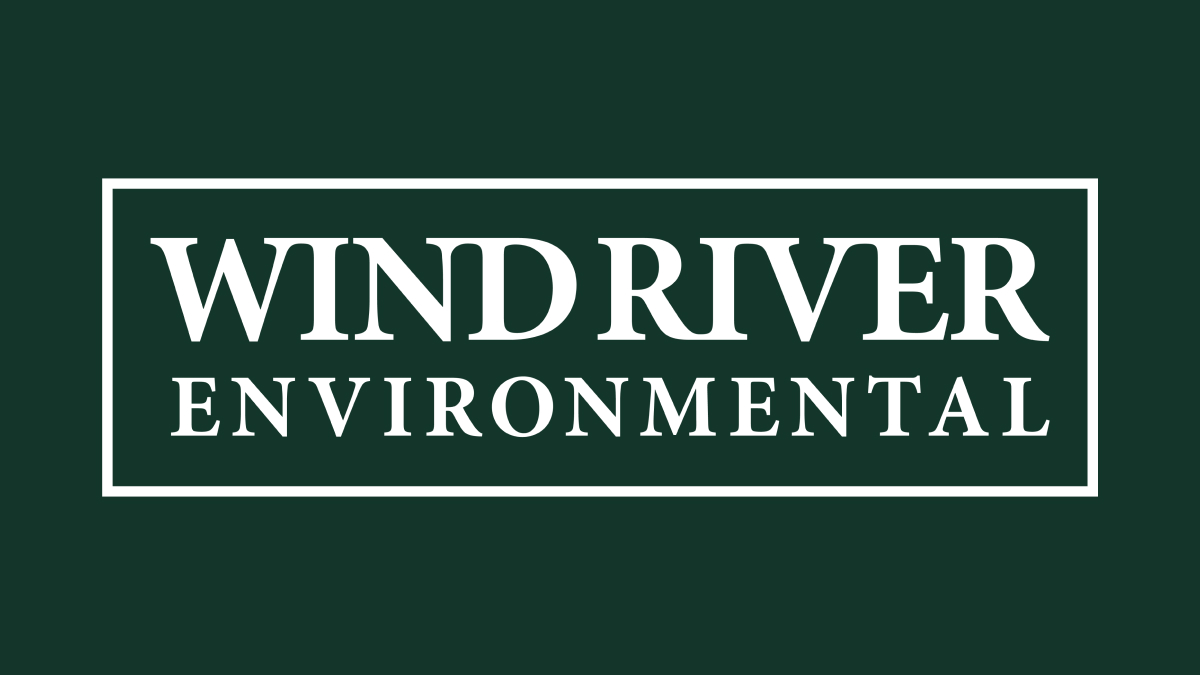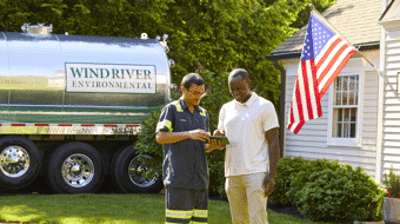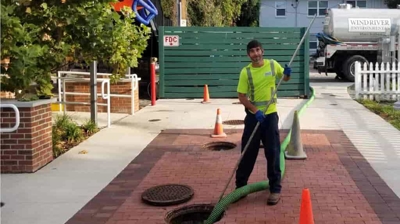Planning for Structures When You Have a Septic Drainfield (North vs. South)
NORTH -
Drainfield Considerations for areas where the ground freezes
In the North, particularly within New England states, there is a high percentage of households on septic systems. New Hampshire and Maine stand out, with approximately 50% of homes relying on individual septic systems.
In this region which reaches all the way down into Maryland and Delaware, drainfield systems often weather colder temperatures, including periods of heavy snowfall. Given the frosty conditions, these systems are typically designed to lie deep enough to prevent freezing.
Three common types of drainfields typically found in the North include:
- Trench systems
- Chamber systems
- Elevated mounds
The type of septic system drainfield you have on your property will largely depend on the level of your property's groundwater and soil type. If you are unsure what kind of drainfield you have, contact Wind River Environmental to schedule a professional inspection.
How Drainfields Function
Drainfields (or leachfields), an essential component of septic systems, serve the critical function of filtering and removing contaminants from the wastewater that emerges from the septic tank. This process occurs as the wastewater percolates through the soil in the drainfield, where soil particles, bacteria, and microorganisms naturally treat the water before it eventually reenters the groundwater system.
For a drainfield to operate effectively, it must remain clear of obstructions and heavy structures. Overloading a drainfield with heavy construction or impermeable materials can compact the soil or block the flow of wastewater, preventing proper filtration. Additionally, covered structures can impede the drainfield from receiving the oxygen it needs to function correctly. This can lead to system failure, environmental contamination, and potentially costly repairs.
Things that should not be installed on top of your septic drain field include:
- Heavy equipment and vehicles, which can compact the soil and damage the drainfield pipes.
- Paving, such as asphalt or concrete, which prevents rainwater from reaching the soil in the drainfield, disrupting the natural filtration process.
- Heavy, covered structures, like garages or sheds, which can impede oxygen flow essential for the breakdown of contaminants.
- Large trees or shrubs with deep root systems, which can penetrate and block drainfield pipes.
- Pools or large spas, the weight of which can compact the soil and disrupt the effluent flow.
- Extensive landscaping, especially using impermeable liners or fabric, which can prevent proper water filtration.
- Recreational courts or driveways, their construction can compact the soil and inhibit the drainfield's function.
Maintaining a properly functioning drainfield is not only essential for the performance of a septic system but also for protecting water quality in the surrounding environment.
Key Considerations for Drainfield Structures in the Northeast
In general, the EPA discourages building on septic drainfields, but there are a few things you can do that are generally considered safe. These can include open-air kennels for pets, lightweight swing sets, or small volleyball or badminton nets.
When considering installations over your drainfield, you must think about the following:
- Weight: Heavy structures or those that compact the soil, such as sheds or decks, can damage the drainfield.
- Insulation: Choose a lightweight, temporary structure setup that won't negatively impact the insulation provided by the soil over the drainfield components.
SOUTH -
Drainfield Considerations for areas where the ground doesn't freeze
Soil Considerations in the South
The type of soil present in your drainfield area profoundly impacts the effectiveness and functionality of your septic system. Soil acts as a natural filter, removing contaminants from wastewater as it percolates through the layers and returns to the groundwater system.
Loamy soil, a balanced mixture of sand, silt, and clay, offers the optimal permeability for efficient wastewater treatment and filtration.
Soil Conditions That Can Ruin a Septic System Drainfield
Different soil types have varying permeability rates, determining how quickly or slowly the wastewater will move through the soil. For instance, sandy soils allow for quick water movement, which might not allow proper filtration. In contrast, clay soils retain water for longer, potentially leading to saturation and system failure.
Soil types commonly found in the Southeast that are problematic for a septic drainfield include:
- Clay soil: High water retention can lead to saturation and system failure.
- Silty soil: Fine grains can compact over time and reduce water movement, leading to potential backups.
- Peat soil: While good for organic matter, it can be too absorbent and lead to inefficient filtration.
- Sandy soil: Allows water to move too quickly, limiting the time for effective wastewater treatment and potentially compromising the filtration process (a common problem in Florida).
- Highly compacted soil: Reduces permeability, preventing proper wastewater filtration.
Areas with shallow groundwater, which are very wet, or where rock is too close to the soil's surface are also not conducive to the safe operation of a conventional septic drainfield.
Alternatives for Septic Systems in Challenging Soil Conditions
Though over a third of homes in the Southeast rely on septic systems, the varied soil conditions across the region (400+ types of soil in North Carolina alone!) mean that many areas cannot rely on conventional septic drainfield constructions. Nonetheless, innovative strategies such as adjusting drainfields closer to the surface or employing artificial drainage techniques ensure the proper management of wastewater.
Common drainfield modifications used in areas with poor soil conditions include the following:
- Adjusting drainfield depth: Utilizing upper soil layers for enhanced filtration in wet or shallow soil conditions.
- Artificial drainage systems: Managing water table levels to prevent saturation in moist soils.
- Low-Pressure Pipe (LPP) systems: Encouraging even wastewater distribution for areas with clay soils and a sandy top layer.
- Advanced pretreatment units: Installing sand, peat, or textile filters for soils with insufficient depth.
- Mechanical aerobic treatment systems: Aerating sewage to improve the breakdown of contaminants.
- Cluster systems: Community-based solution directing wastewater to a communal drainfield with optimal soil conditions.
Impact of Soil Type on Drainfield Surface Installations
The choice of what can or cannot be installed over a drainfield is significantly influenced by soil type, particularly in the Southeast, where building over your drainfield is largely discouraged. In this region, the primary concern with installing structures over a drainfield is soil compaction.
As previously mentioned, soil's ability to filter and absorb water efficiently is significantly reduced when soil becomes compacted. This can lead to system failure, as the wastewater will not percolate properly, causing backups and potential health hazards.
In the Southeast, where the soil types vary dramatically and rising groundwater is becoming an issue, the risk of compaction from installing structures (or driving heavy equipment) over a drainfield becomes even more pronounced.
You should never install the following over a drainfield:
- Sheds
- Garages
- Driveways
- Pools
- Patios
- Tennis courts
- Basketball courts
- Paving of any kind
Even the installation of lighter structures, such as decks or pergolas, should be carefully considered and generally avoided to prevent compaction and preserve the operational integrity of your drainfield.
Before installing anything on your drainfield, always consult with a septic professional, like Wind River Environmental, and your local building codes to ensure that you are not installing something that will damage your septic system or cause environmental damage.
Be Cautious; Consult a Professional
Knowing what structures can be safely placed above a drainfield is vital to maintaining a functional septic system. Always confirm with local guidelines and our septic system professionals before changing your drainfield area. Regarding the safe operation of your septic drainfield, you are always better off being cautious and consulting with septic system specialists like our team at Wind River Environmental.
Contact us online today to schedule an appointment and learn more about your septic drainfield and how the area it occupies can be safely utilized.






